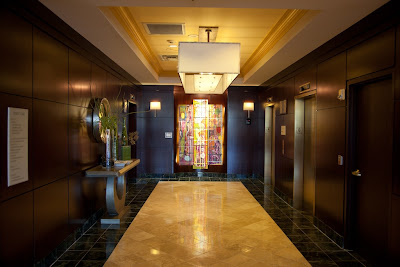Being intrigued by his work, I scheduled a Skype talk with David in October. I asked David about his creative path and why he decided to become an artist. David attributed his creativity to the side effects of radiation treatment he received in early childhood. David also told me that his mother was killed in a Bolshevik camp and he was born premature at only five months. His mother was exposed to nuclear radiation during pregnancy and when he was born he was chemically treated as well. David said, “Growing up as orphan… I was basically unwanted child and used by Communists for experiments. They used some chemicals. I don’t know what it was. The Russians were using really hard staff… and [some parts] of my brain became more active.”
At the same time, David warned me that he is “usually lying, so it really depends on what kind of lie you want to hear.” When I Googled David’s biography, there were indeed numerous articles saying that David often fabricates his own biography.

I am not a biographer, historian or an investigator, and my purpose was not to validate all facts of David’s past, but to get to know him in person and learn from him. I realized that David’s work as well as his persona provide great material for journalists and the media. His work is provocative yet clever; it delivers a clear message that resonates with many. For example, look at his Klaus and Knizak sculpture at the Futura Gallery in Prague: two huge bare naked butts inviting an observer to climb the ladder and stick his/her head in the butthole.
 Inside there is a video of two Czech politicians feeding each other slop to a soundtrack of 'We are the Champions.' Most of David’s art is very political, and if you trust his self-told biography, it is very personal as well. An embryo trapped in a sewer, dark babies with the giant blank heads climbing the tower; men broken into pieces are only three of the many sculptures that reflect a difficult childhood and lots of pain. Reflecting on the Metamorphosis sculpture, David said, “This is how I fell; it is a mental self-portrait.” Also, when the times were especially gloomy and hard, I asked him what kept him going, he said, “Dissatisfaction and rage.” That anger and dissatisfaction helped him to shape a unique persona: shrewd, bold, and provocative. Therefore, my dear aspiring artists, here is a tip for you: if you would like to be favored by the media and generate a lot of buzz, create a marketable and enticing personality and/ or instigate the audience with your art.
Inside there is a video of two Czech politicians feeding each other slop to a soundtrack of 'We are the Champions.' Most of David’s art is very political, and if you trust his self-told biography, it is very personal as well. An embryo trapped in a sewer, dark babies with the giant blank heads climbing the tower; men broken into pieces are only three of the many sculptures that reflect a difficult childhood and lots of pain. Reflecting on the Metamorphosis sculpture, David said, “This is how I fell; it is a mental self-portrait.” Also, when the times were especially gloomy and hard, I asked him what kept him going, he said, “Dissatisfaction and rage.” That anger and dissatisfaction helped him to shape a unique persona: shrewd, bold, and provocative. Therefore, my dear aspiring artists, here is a tip for you: if you would like to be favored by the media and generate a lot of buzz, create a marketable and enticing personality and/ or instigate the audience with your art.
My second major lesson from David is to become business smart. David mentioned over the course of our hour-long conversation that sales skills are extremely important if one wants to make it to the art world. He witnessed over ten empty-gallery “exhibits” or “one microscopic dot in the corner” positioned as “art” and sold over the last ten years or so. Thus, business skills and an ability to sell your art are crucial for success.
I noticed that many David’s sculptures are very technical and complex. Some of them employ motion. David told me he studied electronics before he studied art, and an engineering skill set came very handy in executing his creative ideas and supervising his projects. He also lived and studied in the USA in mid 90s, and we had a nice chat about the American landscape and art programs in New York.

David agreed it could be challenging to acquire big art commissions if you are not in the epicenter of the art market. For example, there are fewer opportunities for an artist in Prague than in New York City. Nevertheless, David has already established his reputation and is well-known internationally. Therefore, investors and media find on the internet in spite of him living in Czech Republic.
I asked David to tell me a little bit more about his early career and how he had acquired commissions when he was only starting. He said investors always found him and he wasn’t chasing the deal. David also told me about his commission process, “You have the investor, you have the budget, and of course, the best inspiration is a deadline.”

At the end of our conversation, David surprised me again and told me about his favorite ice cream flavor. Guess what it was? A beer ice cream, proudly brewed and frozen in Czech Republic. Why not? An original artist has an original taste. I wish David good luck in his further projects and I hope one day he will visit Dallas or I can meet him over a bowl of beer ice cream in Prague.






































